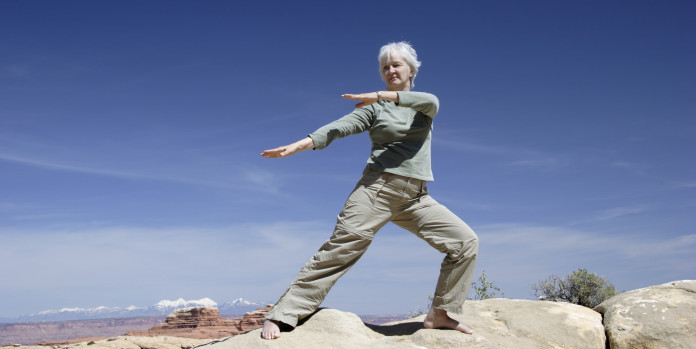5 Ways to Reduce Your Risk of Painful Osteoporosis Fractures

According to Osteoporosis Canada, osteoporosis fractures are more common than heart attack, stroke and breast cancer combined. One in three women and one in five men experience an osteoporotic fracture in their lifetime. There are ways to lower your risk of developing osteoporosis or having bone break if you do get it.
Who Gets Osteoporosis?
Although the popular belief is that only women suffer from osteoporosis, men and women of all ages are susceptible.
Post-menopausal women are at a much higher risk due to the reduction in estrogen. They lose bone density at double the rate of men and pre-menopausal women.
Osteoporosis is a bone disease characterized by decreased bone mass and deterioration of bone tissue. It is often referred to as the ‘silent thief’ because it occurs without symptoms.
Bones become thin and porous, which leads to a significant increase in the risk of fracture. The most common sites for these types of fractures are at the wrist, spine, shoulder and hip.
1 in 3 women and 1 in 5 men experience #osteoporosis related fracture during their lifetime. Learn to prevent them.
How to Prevent Osteoporosis
Osteoporosis can be prevented by developing and maintaining strong bones. An ideal way to build dense bones is to take part in bone-loading activities like jumping when we are young. This is because bone development happens during childhood and adolescence.
Another way is to be active throughout life. This will reduce the amount natural of bone density deterioration as we age.
Studies show that consistent strength training prevents further bone loss and maybe even builds new bone. Thus, it is vital for all people to take part in resistance training exercises.
5 Ways to Lower Your Risk of Osteoporosis Related Fractures
There are five parts of a comprehensive plan to prevent or treat osteoporosis. There are five components of healthy living weight-bearing exercise, strength training exercise, posture training, balance training, and stretching. Individuals with a greater risk of fracture need to adapt these to their level of fitness and the severity of osteoporosis.
1. Weight Bearing Exercises
Weight bearing exercises for osteoporosis cause muscles and tendons to pull on bones causing stimulation of bone cell reproduction. These types of exercises are often when the body is upright with gravity pressing down.
There are many to choose from. These activities include walking, running, aerobics, and dance. Sports to try are basketball, tennis, soccer, or pickleball.
Individuals who already have osteoporosis and a greater risk of bone breaks due to osteoporosis need to perform lower-impact activities like Tai Chi. When in doubt, start low and slow.
2. Strength Training and Resistance Training
Strength training incorporates weights or some form of resistance (i.e. exercise bands. body-weigth or Pilates) which causes bones and muscles to work by lifting, pushing or pulling the load.
Strength training increases muscle mass and muscular strength which increases bone density, thus preventing fractures in the future.
3. Posture Training
Posture exercises help maintain good neck, back and shoulder positioning by aligning the spine. By simply sitting and standing with a straight back and shoulders retracted one can help strengthen the upper posterior chain muscles.
This will help maintain good balance, thus preventing one from falling and fracturing their bones. A side benefit of maintaining a good posture is that it improves our confidence.
Balance exercises also help improve one’s coordination. Exercises that include the back muscles, as well as hips, assist with maintaining proper posture.
4. Balance Training
Balance training is a low impact activity that may not maintain or build bone density. However, it improves low-impact stability and body awareness. This in turn decreases the risk of falling when we need to quickly adjust to prevent a fall.
Some examples include when we slip on ice or bump into someone while walking down the street. Try Tai Chi and Yoga as activities to improve balance.
5. Regular Stretching
Stretching is important to maintain flexibility around joints and muscles. We lose flexibility as we age. This causes pain and stiffness, which leads to decreases in activity. When we are often in pain or feeling stiff we opt out of physical activity.
Long-term physical inactivity negatively affects your bone health. Therefore, to feel capable of keeping active we need to maintain good flexibility and range of motion in our joints.
It is never too late to start a bone-healthy exercise program, regardless of your osteoporosis status. Taking part in a regular exercise program will help prevent falls and fractures while preserving existing bone density.
If you don't know where to start, contact a Kinesiologist.






